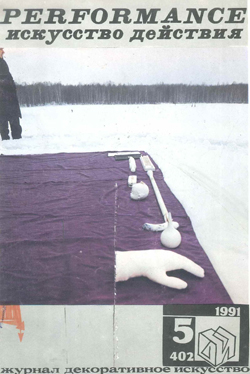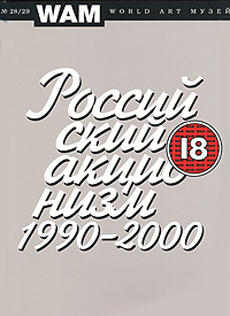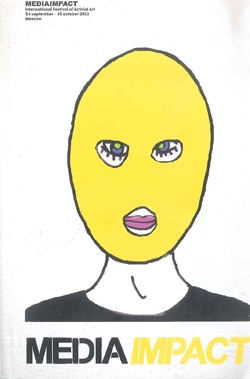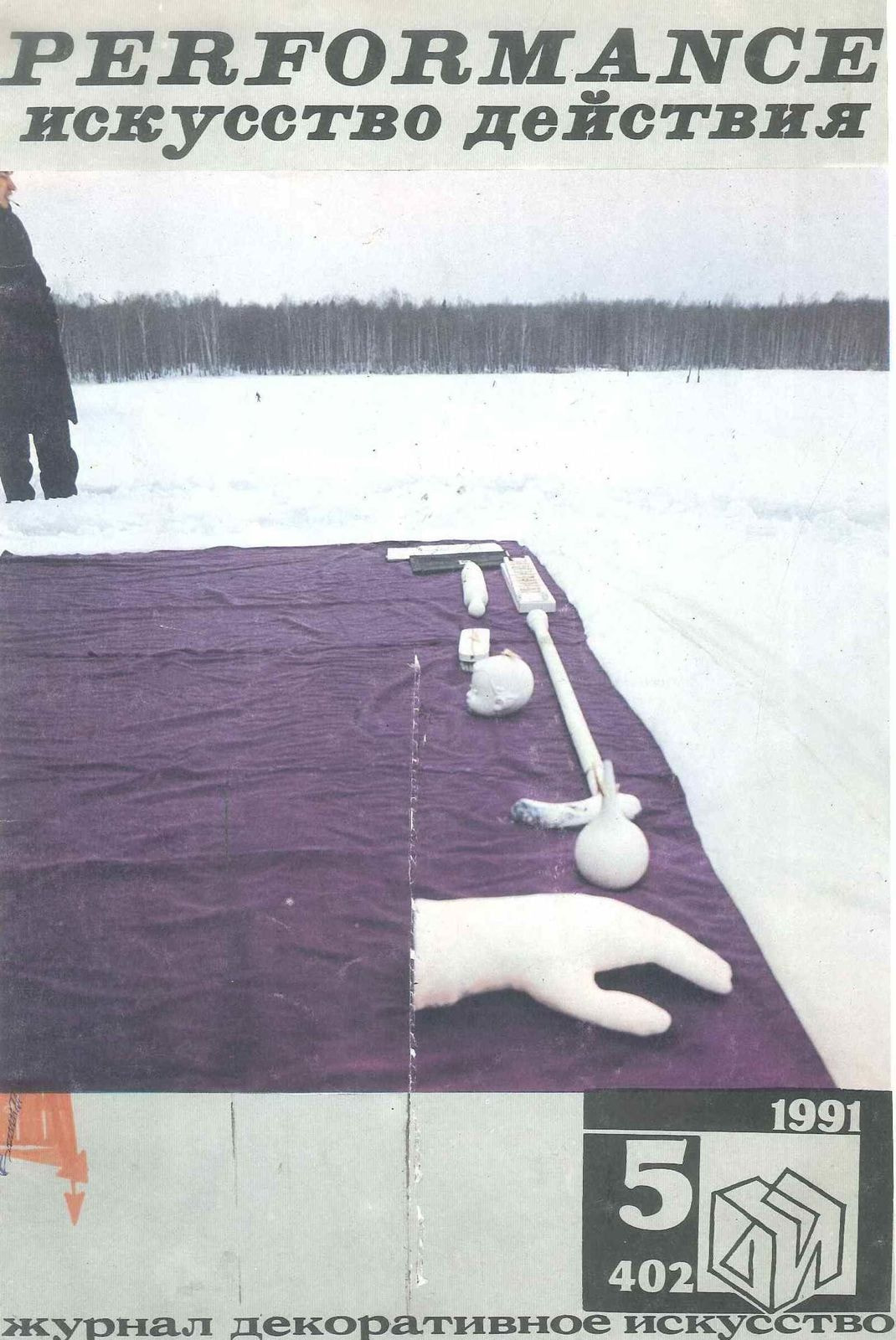Publications on Russian and Soviet performance art are extremely scarce. This was one of the main reasons behind the Performance in Russia: Cartography of its History exhibition and the eponymous catalogue. Here is a selection of key publications that offer the best introduction to the history of Russian performance and to performance art in general.
Overview of publications on Russian performance

RoseLee Goldberg. Performance Art: From Futurism to the Present. Russian Translation
Moscow: Ad Marginem Press, 2013. — 320 pp.
This book, first published in New York in 1979, remains an essential source on performance art in Russia and the rest of the world. It was at the start of performance studies and has to a great extent defined the very notion of performance, as we understand it today. Reprinted more than once, the book has also been translated into several languages. Although it is dedicated to the international history of performance, RoseLee Goldberg has devoted several chapters to performance art in Russia. The chapter on the Russian avant-garde is of particular interest, as it remains the only truly comprehensive analysis of the subject. The chapter on contemporary Russian performance art was written specially for the Russian translation of the book.

Encyclopedia of Russian Avant-Garde. Fine arts. Architecture. Vol. 1-2. Ed. Andrei Sarabyanov
Moscow, 2013
If we speak of performance art in relation to the avant-garde, we will hardly be able to identify any essential source on the topic, as at the time performance art had not yet become a separate art form. However, the impetus that Russian art of the postwar era has got from the early 20th century movement was so significant that without it the history of performance art would not be complete. If there is a whole list of sources dedicated exclusively to international performance, the best sources on the avant-garde roots of Russian performance are perhaps the works offering a more general analysis of avant-garde art.

Margarita Masterkova. Moscow Performances
A-YA Magazine. 1982, No. 4. P. 5-11
A-YA is a legend in and of itself. Published from 1979 to 1982 in Paris by Soviet émigré artist Igor Shelkovsky, the journal was entirely devoted to the underground Soviet art scene. A-YA has contributed a lot to the later studies of performance art in the USSR. The first issue featured Boris Groys’ famous Moscow Romantic Conceptualism—the article that gave the Soviet underground art movement the name it is still firmly associated with, despite all the debates around it in the years that followed. Margarita Masterkova’s (Tupitsyna’s) article was the earliest study of Russian postwar performance art, focusing on groups like Collective Actions, Gnezdo, and the duo of Rimma and Valeriy Gerlovin.
Collective Actions. Trips to the Countryside
Moscow, Ad Marginem, 1998. — 848 pp.
This is probably the only publication on one art group’s history that should be included in the general list of sources on Russian performance art.
Collective Actions was founded by Andrei Monastyrsky in 1976 and was active for 30 years—though the artists still do organize occasional actions today. The group’s most active members included Nikita Alexeev, Nikolai Panitkov, George Kiesewalter, Igor Makarevich, Elena Elagina, Sergei Romashko and Sabine Hänsgen. In the mid-1970s Collective Actions started organizing its famous out-of-town performances (“trips to the countryside”), which were all meticulously documented by the group.
The publication includes documentation of five such trips. However, it offers much more than an overview of a single group’s history. The documents assembled in this book provide unique insight into the aesthetic of Moscow Conceptualism, allowing the reader to reconstruct the intellectual context that informed the development of Russian contemporary art for two decades.

Dekorativnoye Iskusstvo
1991 — No. 5
Dekorativnoye Iskusstvo (earlier published as Dekorativnoye Iskusstvo SSSR) was one of the first journals to publish articles on contemporary art in the 1980s. In 1989, many important pieces were published in its Rakurs supplement. The fifth issue of the journal in 1991 was dedicated entirely to performance art, which was then a new concept.
The issue featured the first ever Russian translation of an excerpt from RoseLee Goldberg’s The Art of Performance: A Critical Anthology (New York, 1984), as well as contributions by Viktor Tupitsyn, Ekaterina Bobrinskaya, Joseph Backstein and Soviet underground artists like Rimma and Valeriy Gerlovin, TOTART, Andrei Monastyrsky, Komar and Melamid, German Vinogradov, and Toadstool group, among others.

Andrei Kovalev. Russian Auctionism 1990–2000
Moscow, 2007
Andrei Kovalev’s ambitious and almost exhaustive study of Russian performance in the 1990s includes artists’ own accounts of their performances and excerpts from press reviews and articles ranging from Moscow Art Magazine to the Megapolis Express paper.

Mediaimpact
Moscow, 2012
